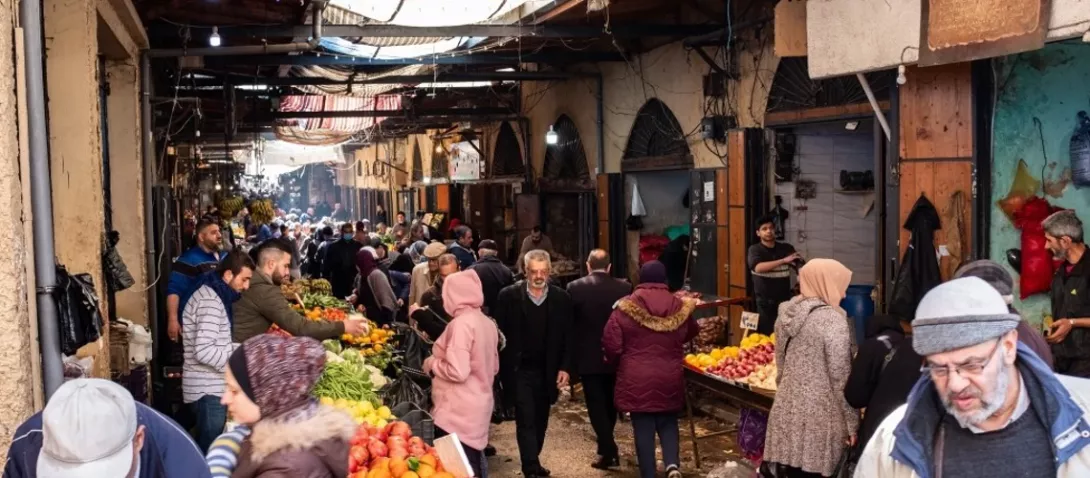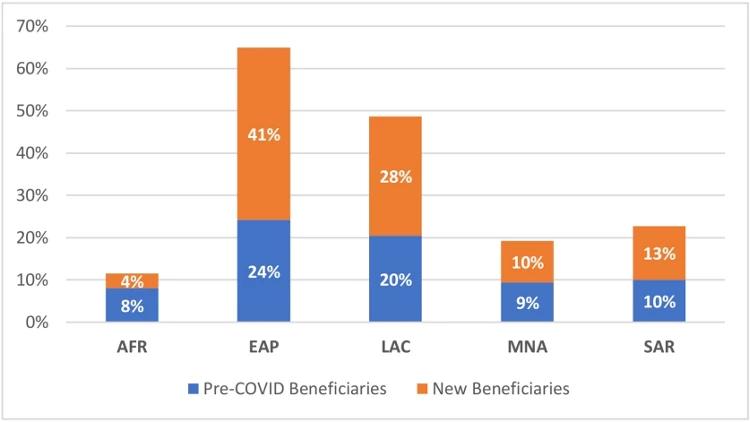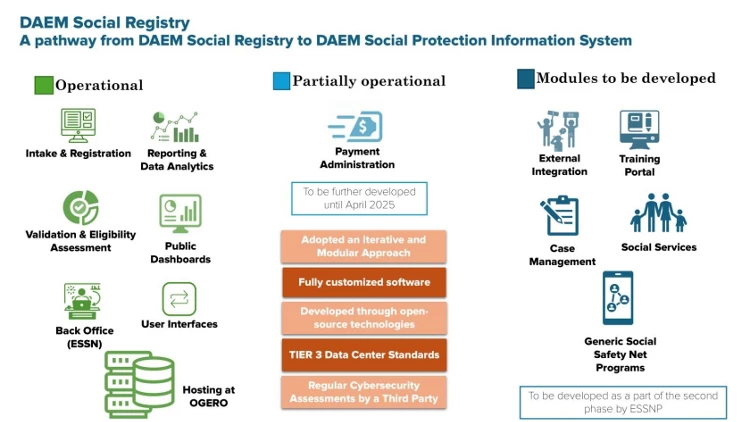
Market in Tripoli, Lebanon. (Shutterstock/ bakr alazzawi)
Different countries take different approaches to Social Protection (SP) delivery systems. Some countries start by establishing a social registry - a system that is capable of supporting the outreach, intake and registration of its population and then assessing their needs and conditions. Other countries first build a beneficiary registry and then try to integrate both systems. A third option is to take a more innovative approach and establish a single system, a Social Protection Information System (SPIS), with all core SP delivery chain functionalities in place (The Sourcebook on the Foundations of the SP Delivery Systems has more information). There is no silver bullet. Country context and existent infrastructure are key factors to consider. But the initial step is to undertake a comprehensive IT assessment to understand what exists and then draft an appropriate roadmap.
So, what did social protection delivery systems achieve during COVID-19?
Three main factors stand out after analysis of different country COVID-19 responses: 1) the ability to scale up rapidly, 2) the adoption of innovative registration methods, and 3) the use of digital payments.
1) Countries with advanced delivery systems were able to scale up COVID-19 measures rapidly and reach a significant share of their population. An estimated 1.7 billion people in low and middle-income countries received COVID-19-related social assistance transfers through a total of 3,800 measures in 223 economies. Interestingly, more than half of them were new beneficiaries (Figure 1).
Figure 1. Share of the population covered by COVID-19 Social Assistance Programs by Region

2) Many countries have developed innovative measures to identify and register new beneficiaries, especially those in the informal sector. Türkiye, Jordan, and Egypt represented great examples of this methodology. These countries basically opened an online channel of registration and relaxed some of their social protection program conditionalities to allow millions of people to register.
3) Digital payments were key as they allowed the safe and quick distribution of social assistance benefits during the pandemic. Countries that had invested in digital infrastructures, foundational ID systems, digital payment gateways – government-to-person (G2P) payments-- and data-sharing mechanisms in pre-pandemic times were able to implement COVID-19- related responses easily and managed to reach a significant share of their population who are usually not part of the formal sector. The World Bank’s recent report on “The Role of Digital in the COVID-19 Social Assistance Response” examines how governments leveraged existing digital infrastructure to scale up COVID-19-related measures.
What Lebanon did for its social protection delivery system
Lebanon adopted an impressive approach by developing a delivery system in the midst of the pandemic. Lebanon was already facing the most devastating, multi-pronged crisis in its modern history. The economic and financial crisis of October 2019 was further exacerbated by the dual economic impact of the COVID-19 outbreak and the massive Port of Beirut explosion in August 2020. Poverty had more than tripled over the past decade (Figure 2).
So, in this fragile context, the Government of Lebanon, under the World Bank-supported Emergency Social Safety Net Project (ESSNP), i.e. AMAN program, established the DAEM Social Registry and registered half of the population within just two months of its launch. The system was developed with fully open-source technologies (no vendor lock-in), hosted at the country’s national telecom authority’s datacenter with TIER 3 standards, and launched a live dashboard from day 1 to monitor the application process.
Figure 2. Poverty Trends in Lebanon

The government made a significant effort to complete the migration of the donor-financed National Poverty Targeting Program (NPTP) into ESSNP in October 2024. The NPTP covered 75,000 poor and vulnerable households but ran out of funding by June 2024. With the migration into ESSNP, Lebanon’s main cash transfer program, AMAN, has reached 168,000 poor and vulnerable households covering 17% of the population and 50% of the poor and the implementation was streamlined through the fully digitized DAEM Social Registry.
The DAEM Social Registry adopted strong monitoring measures to achieve transparency. The government hired a third-party monitoring agency to undertake regular cybersecurity and vulnerability tests to inform software development and hosting to prevent any form of cyber-attacks and to improve the resilience of the system. In addition, access to the platform is restricted to user interfaces without human interaction. Building on this progress, the ESSNP will continue to support the development of the DAEM Social Registry into DAEM SPIS as per the needs of the government (Figure 3).
Figure 3. Module Development of DAEM Social Registry and way towards DAEM SPIS

Therefore, the lessons learned are that the success of the development of the DAEM Social Registry, as with any social protection delivery system, lies in 3 key factors: 1) undertaking a comprehensive IT assessment of what works in a country setting, 2) adopting a clear design and development roadmap, and 3) a strong commitment from the government with a vision to advance system development.